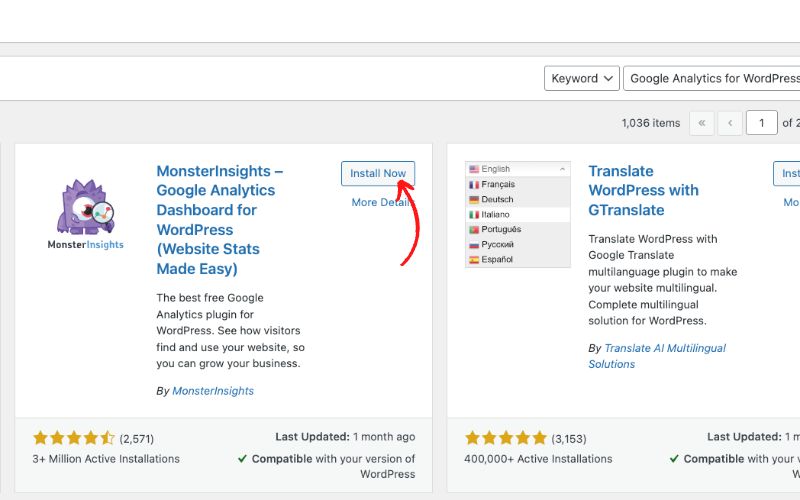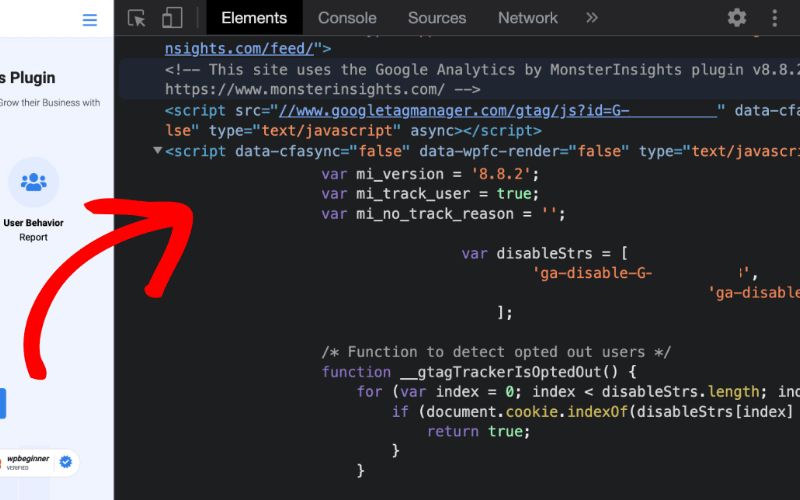How to add google analytics to WordPress? Google Analytics is a powerful tool that can be used to track the activity on your WordPress site. By adding Google Analytics to your WordPress site, you can track the number of visitors to your site, where they came from, and what pages they visited.
Adding Google Analytics to your WordPress site is a fairly straightforward process. This article will show you how to add Google Analytics to WordPress. We will also show you how to configure Google Analytics so that you can get the most out of it.
What is Google Analytics?
Google Analytics is a service offered by Google that allows you to track and analyze your website traffic. With Google Analytics, you can track how many visitors visit your website, where they are coming from, and what pages they visit. This information can help you to optimise your website and make it more user-friendly. Additionally, Google Analytics can also help you measure your marketing campaigns’ effectiveness.

How to create a Google Analytics account
To create a Google Analytics account, visit https://analytics.google.com/ and click on the “Sign Up” button. You will be asked to provide basic information about your websites, such as its name and URL. You will also be asked to provide your contact information and to choose a username and password.
Once you have created an account, you must copy your tracking ID. To find your tracking ID, log in to your Google Analytics account and click on the “Admin” tab. Then, select “Property” and click on the ” tracking ID” column. Your tracking ID will be displayed in this column.
Next, log in to your WordPress site and navigate to the “Settings” menu. Under the “General” tab, paste your tracking ID into the “Google Analytics Track Code” field. Then, click on the “Save Changes” button.

How to copy your tracking ID
To copy your tracking ID, log in to your Google Analytics account and click on the “Admin” tab. Then, select “Property” and click on the ” tracking ID” column. Your tracking ID will be displayed in this column. Next, log in to your WordPress site and navigate to the “Settings” menu. Under the “General” tab, paste your tracking ID into the “Google Analytics Track Code” field. Then, click on the “Save Changes” button.
How to add Google Analytics to WordPress
Now, how to add Google Analytics to WordPress,You can addon google analytics in two ways in WordPress
Using The Monster Google Analytics Plugin
If you’re not comfortable adding Google Analytics code to your WordPress site manually, there are several plugins that can help you do this automatically. One of the most popular plugins for this is the Monster Insights Google Analytics. To install the Google Analytics for WordPress plugin, navigate to the “Plugins” menu in your WordPress dashboard and click on the “Add New” tab. Then, type “Google Analytics for WordPress” into the search bar and click on the “Install Now” button. Once the plugin has been installed, click on the “Activate” button to activate it.Once the plugin has been activated, you’ll need to enter your Google Analytics tracking ID. To find your tracking ID, log in to your Google Analytics account and click on the “Admin” tab. Then, select “Property” and click on the ” tracking ID” column. Your tracking ID will be displayed in this column.Next, navigate to the “Settings” menu in your WordPress dashboard and select the “Google Analytics for WordPress” tab. Paste your tracking ID into the “Tracking Code” field and save your changes. The Google Analytics for WordPress plugin will now start tracking your website’s traffic.

Using The WP Code Plugin
The second way to install Google Analytics in WordPress is by using the WP Code plugin. This plugin allows you to easily add code to the header and footer of your WordPress site. To install the WP Code plugin, navigate to the “Plugins” menu in your WordPress dashboard and click on the “Add New” tab. Then, type “WP Code” into the search bar and click on the “Install Now” button. Once the plugin has been installed, click on the “Activate” button to activate it.

Next, navigate to the “Settings” menu in your WordPress dashboard and select the “Wp Code” tab. Paste your Google Analytics tracking code into the “Header Scripts” field and save your changes. The WP Code plugin will now start tracking your website’s traffic.
Add Google Analytics to the Header.php file
If you want to manually add Google Analytics code to your WordPress site, you can edit the Header.php file. To do this, login to your WordPress site and navigate to the “Appearance” menu. Then, click on the “theme file editor” tab. In the “Templates” section, click on the Header.php file.
Once the Header.php file has been opened, you’ll need to locate the <head> tag. Once you have located the <head> tag, you’ll need to paste your Google Analytics tracking code below it. Once you have added your tracking code, click the “Update File” button to save your changes. Your Google Analytics tracking code will now start tracking your website’s traffic.
Verifying Your Google Analytics Tags
Once you have added your Google Analytics tracking code to your WordPress site, you’ll need to verify that it is working correctly. To do this, navigate to the “Verify Your Google Analytics Code” page.
Enter the website URL into the “Website URL” field and click on the “Verify” button. Google Analytics will then start tracking your website’s traffic.

Additional features of Google Analytics
Google Analytics offers a number of features that can help you improve your website’s traffic and ROI. Some of these features include:
– Traffic reports:
Google Analytics provides detailed traffic reports that can help you understand where your website’s traffic is coming from and how it performs.
– Site search reports:
Google Analytics allows you to track the search terms that people are using on your website. This can help you improve your website’s content and ensure that it meets your visitors’ needs.
– Ecommerce tracking:
Google Analytics allows you to track your website’s eCommerce transactions and revenue. This can help you improve your online sales and track your return on investment (ROI).
– Conversion tracking:
Google Analytics allows you to track how well your website is converting leads into customers. This can help you improve your website’s marketing efforts and see a greater return on investment.
– Custom reports:
Google Analytics allows you to create custom reports that can help you track and analyze your website’s traffic. This can be extremely helpful if you want to track specific metrics or goals.
– Link tracking:
Google Analytics allows you to track the links that are being clicked on your website. This can be helpful if you want to see which links are being clicked the most and make sure that they are effective.
– AdWords integration:
Google Analytics allows you to integrate your website with Google AdWords. This can be helpful if you want to track your website’s AdWords campaigns and see how they are performing.
– Goals:
Google Analytics allows you to set up goals and track how well your website is performing in relation to those goals. This can help you measure your website’s success and see where improvements need to be made.
– A/B testing:
Google Analytics allows you to conduct A/B tests on your website. This can help you improve your website’s design and user experience by testing different versions of your site.
– User tracking:
Google Analytics allows you to track individual user behavior on your website. This can help you understand how your website is being used and make improvements accordingly.
– Event tracking:
Google Analytics allows you to track specific events on your website. This can be helpful if you want to track user interactions, such as button clicks or downloads.
– Custom dimensions:
Google Analytics allows you to create custom dimensions that can help you track specific data points. This can be extremely helpful if you want to track data that is not included in the standard reports.
– Custom alerts:
Google Analytics allows you to set up custom alerts that will notify you when certain events occur on your website. This can be helpful if you want to be notified of changes in your website’s traffic or performance.






